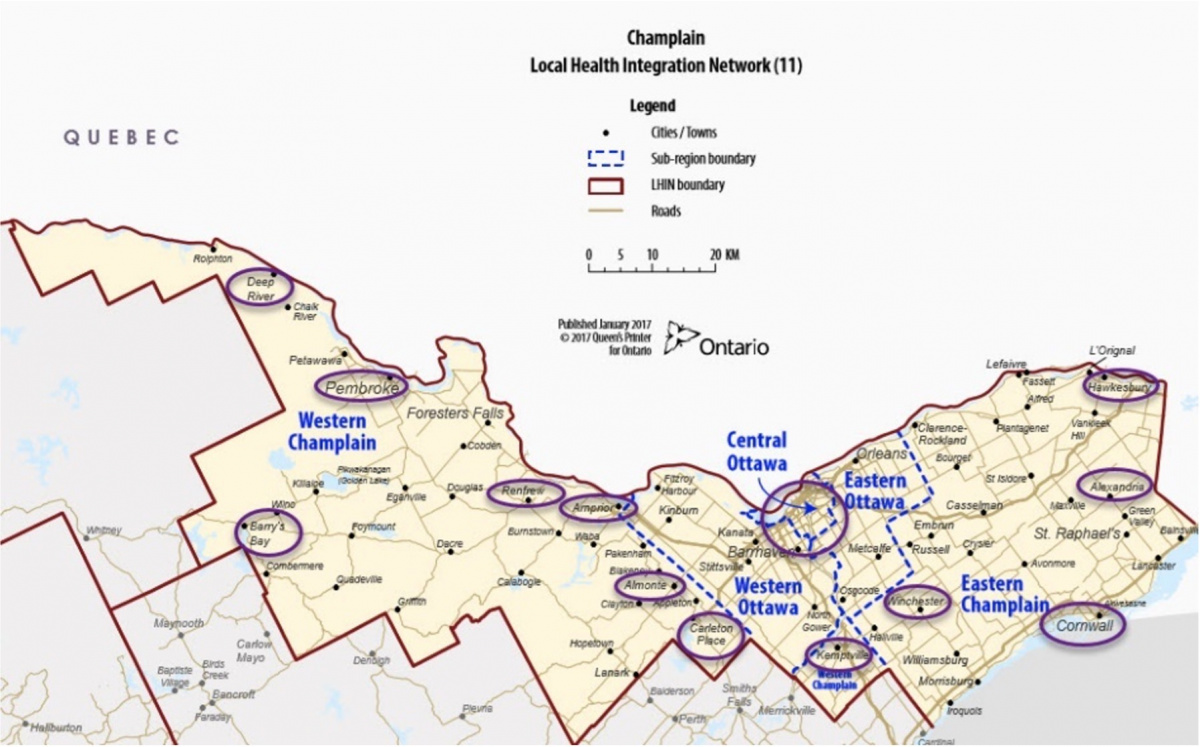The University of Ottawa Heart Institute’s Regional Program equips and supports staff of partnering hospitals in the care of cardiac patients in the Champlain region.
News and update
The University of Ottawa Heart Institute (UOHI) has updated its NSTEMI (non-ST elevation) protocol (PDF) from 2014.
Here are some key changes in the 2022 version:
- We recommend a trending of biomarkers for the diagnosis of ACS/ NSTEMI.
- Once diagnosis is confirmed, we recommend an assessment of patient’s bleeding risk.
- Patients with no anticoagulation medications at home: The preferred choice for the second antiplatelet therapy is PO Ticagrelor. If unable to administer Ticagrelor, physicians may consider PO Clopidogrel as an alternative. The loading dose has increased to 600 mg once and maintenance dose of 75 mg daily.
- Patients taking oral anticoagulants at home: The recommendation is PO Clopidogrel (same loading and maintenance dose).
- Risk assessment for NSTEMI patients is also included in the protocol. The risk description for high-risk patients now includes criteria such as hemodynamic instability and ongoing angina at rest despite medical therapy.
For more information, please view this video of Dr. Le May’s presentation of Champlain LHIN Contemporary Strategies in the management of Non-STE-ACS patients.
Education Sessions
These webinars are designed for healthcare professionals, but particularly for nurses, to learn and review cardiac conditions affecting their patients.
To register, select the “Register” button. A form will appear in an internet browser. Please complete the form. Once completed, you will receive a link to the webinar session by email.
No upcoming sessions.
Tools and Resources
Guidelines Applied to Practice (GAP) Discharge Tools
What are GAP discharge tools?
Guidelines Applied to Practice (GAP) discharge tools are tools (formatted by paper or electronically) based on best practices of pharmacotherapy, lifestyle modifications, and self-management strategies for patients with a diagnosis of Acute Coronary Syndrome (ACS) and/or heart failure (HF). GAP discharge tools are used during the hospital stay and at discharge in collaboration between the hospital care team and the patient. Use of GAP discharge tools has proven to improve patient outcomes by decreasing readmission rates, decreasing mortality, and improving medication adherence.
How is it regional?
GAP discharge tools are standardized and implemented in partnering hospitals throughout the Champlain region to ensure the continuity of care and support of cardiac patients. Since its implementation, the UOHI has provided ongoing guidance and oversight to our partnering hospitals. As part of the Hospital Service Accountability Agreement (HSAA), the health record teams in the region collect quarterly data about the use of GAP discharge tools in their respective hospital. The UOHI receives this data, submits it to the LHIN, and works with partnering hospitals to develop ways to improve compliance.

Other Patient Tools
- Coronary Artery Disease and Recovery from a Heart Attack
- Coronary artery disease management tool - (PDF)
- Heart Failure Patient Guide
- Heart Failure Daily Weight Tracker (PDF)
Contact
Sandra Wong, RN, MScN
Regional Program Nurse Educator
613 696 7000 ext. 15450
sawong@ottawaheart.ca

